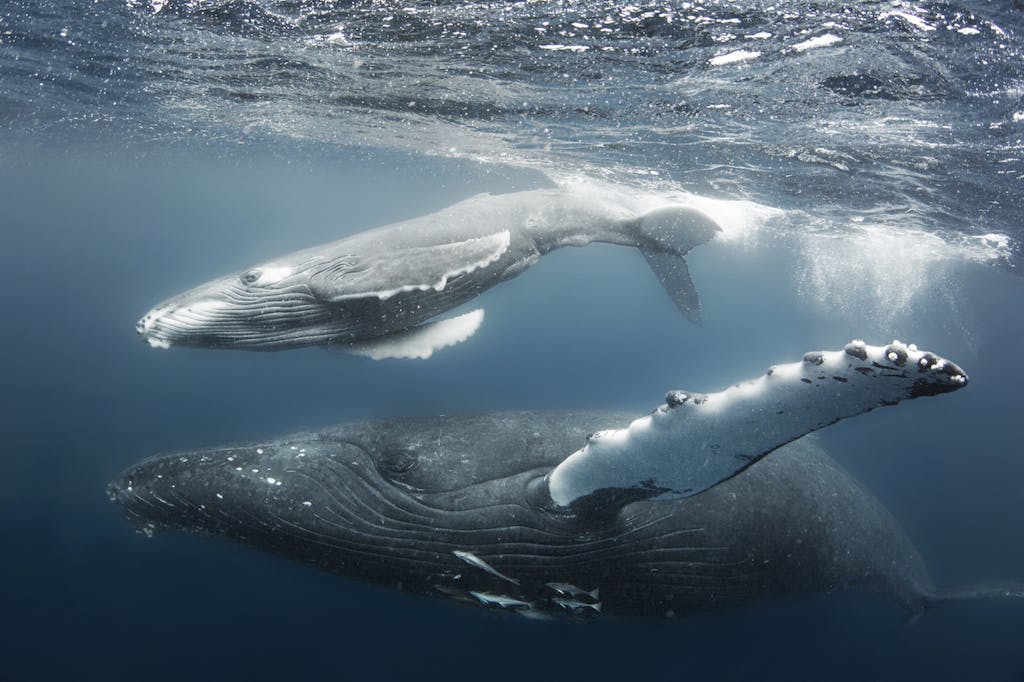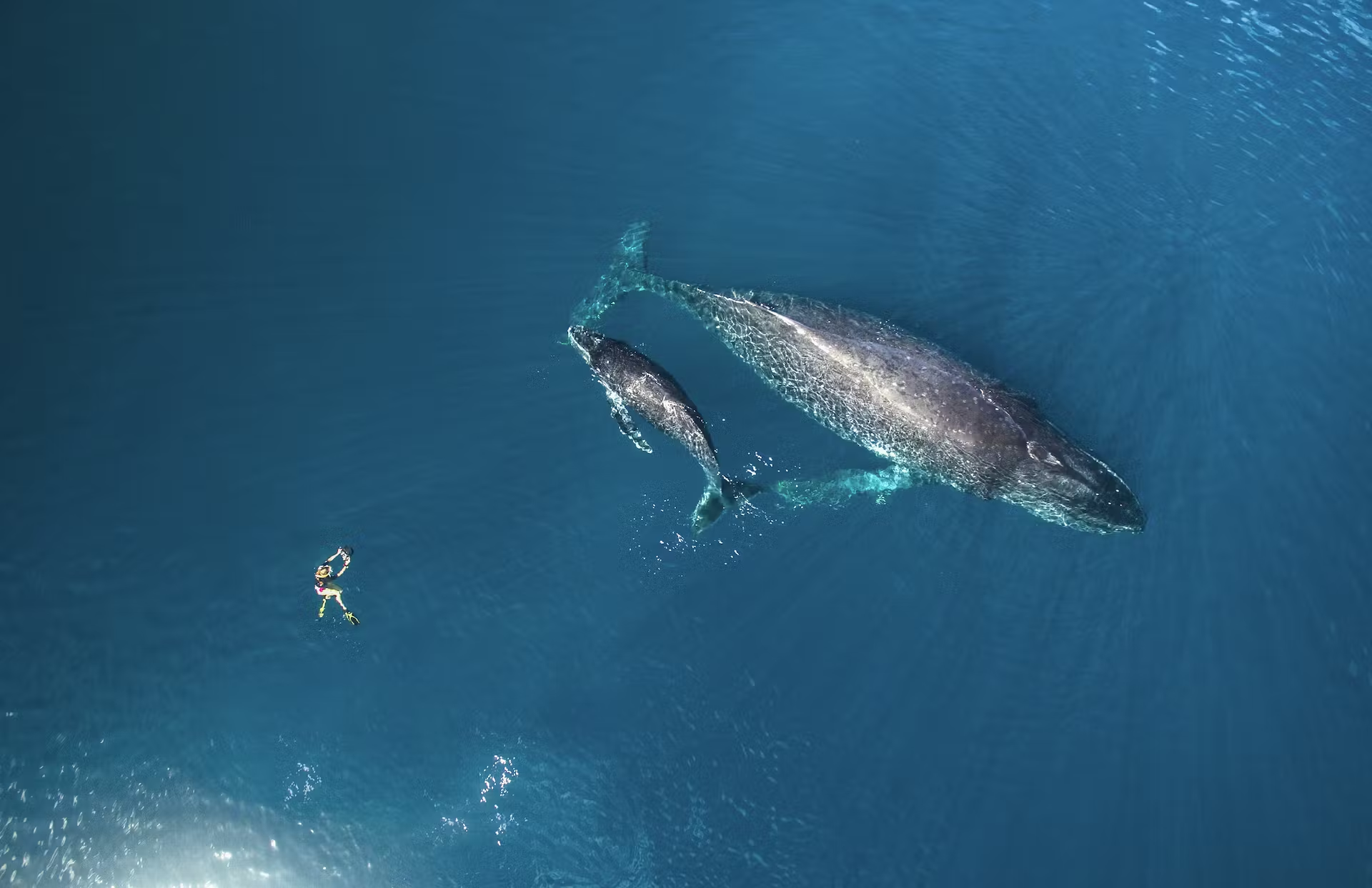Photogenic Giants: Encountering Humpback Whales in French Polynesia and Pacific
Somewhere deep in the waters of French Polynesia and Pacific, humpback whale is singing. It’s a haunting song, high-pitched yet soothing, that chimes through the water. As it grows louder, a bullet-shaped shadow appears from beneath. It rises, slowly taking form from the gentle rays of sunshine penetrating the blue. This female humpback is a charcoal gray, dabbed with sand-colored scars that are signs of an adult life lived and vast journeys undertaken.
A far-reaching pectoral fin appears on either side. Then something extraordinary happens— a small calf appears from underneath. Distinguished by a lighter shade of gray, he has as much character as a toddler who has recently found his feet. Escaping from the protection of his mother, he makes a swooping dash, headfirst, for the surface. There’s a sense of pure, unadulterated freedom glinting in his dark eyes.
The mother quickens her ascension, keeping up with her excited young, and the pair appear above the water with their leathery backs glinting in the sun. Two dorsal fins, side-by-side, shape the horizon. Two puffs of water droplets expel high into the atmosphere to form a glistening mist, and a faint rainbow hangs in the air.

The journey to the French Polynesia and Pacific
This spectacular sight is a sign that breeding season in French Polynesia and Pacific is in full swing. It is August, and thousands of humpback whales have arrived in the tropical waters of French Polynesia, the Cook Islands and Tonga to give birth to, and rear, their young.
Their passage here has been long and arduous. The more than 3,700-mile (6,000-kilometer) migration has taken the whales out of the cold Southern Ocean, along the east coast of New Zealand and into the lower latitudes of the French Polynesia and Pacific. It is known as one of the most significant migratory journeys of any living mammal. Having left the polar waters of Antarctica in April, the whale takes a three-month-long swim to reach the region. Here, they remain for up to four months. Then, come October, it’s time to make the journey back again.
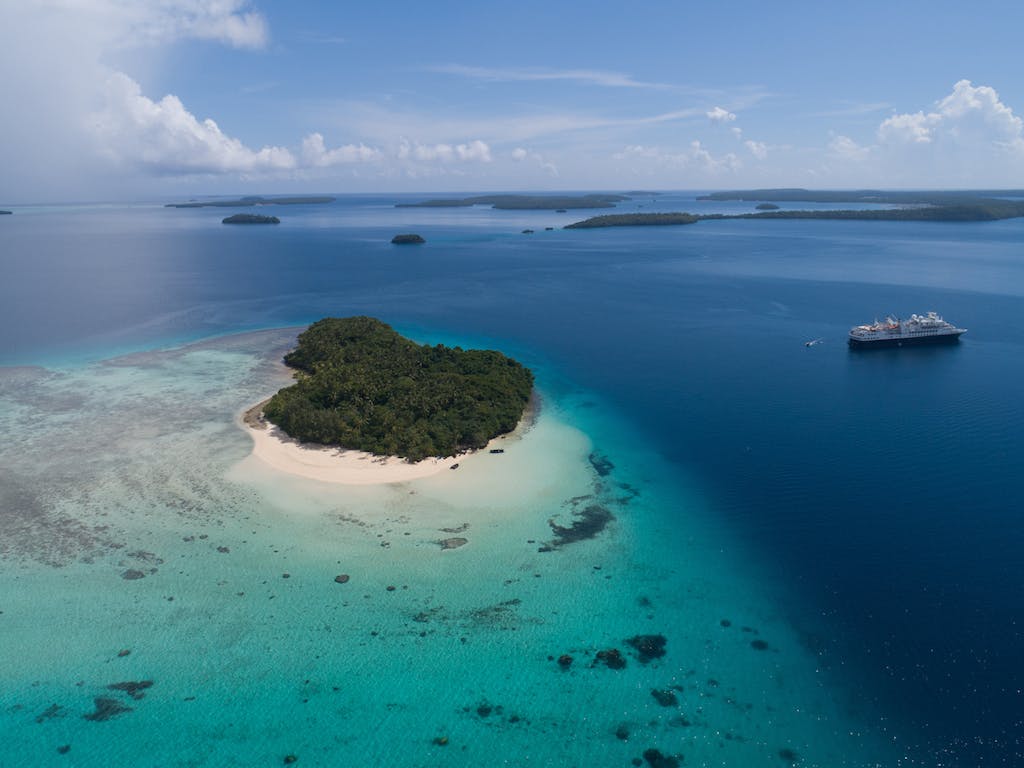
While the polar regions are rich in krill – a vital part of the humpback diet – the tropical waters provide warmth and protection for raising calves.
“These impressive humpback whale migrations are integral to the survival of the species,” explains whale expert and photographer Victoria Walker. “Pregnant females give birth in warmer waters because the calves would not survive the harsh winter months of the polar regions. Initially, they do not have an insulating blubber layer, so they are vulnerable.”
The area around French Polynesia and the Tongan archipelago is a popular breeding ground for whales heading north from Antarctica. The islands of Hawaii also serve as a haven for females and calves heading south from the cold Arctic seas.
“The calm, reef-protected waters provide shelter for the female Humpbacks to give birth,” Walker adds. “It’s believed the calves consume up to 150 liters of their mother’s rich and fatty milk per day here.”
During this period, the calf builds up its strength as the mother prepares her offspring for the long but unavoidable journey south that will occur later in the year. By then, the young humpback will be old enough to feed itself and can thrive on a krill-dominated diet once it reaches Antarctic waters.
Where the boys are
Meanwhile, it’s not just the females making the most of the warm environment of the tropics. The males continue to display “courtship rituals” to attract mates and establish dominance over the competition. It’s not unusual to see males escorting females as they travel with their calves.
“While they provide much needed additional protection to the mother and calf, they also hope to mate with the mother when she is ready,” Walker says.
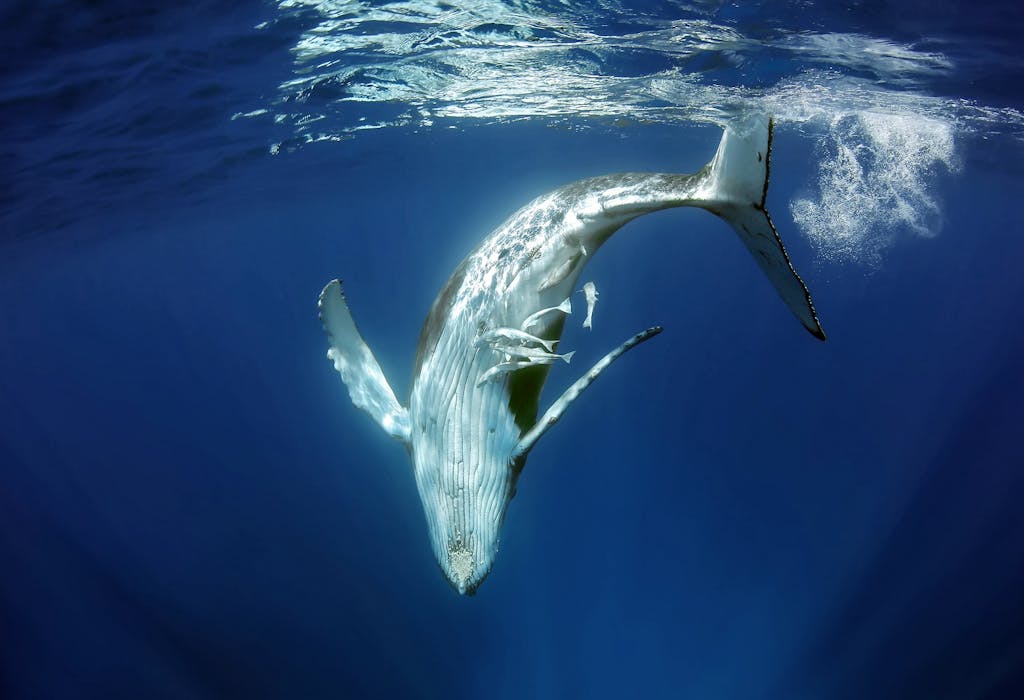
An pportunity to photograph humpback whales
When traveling within the breeding season of July to October, there’s a reasonable chance to witness these humpback behaviors around French Polynesia, the Cook Islands and Tonga.
Every day is different, according to Walker. “We never know what we might see,” she says. It could be a mother and calf resting [at the surface] or several males chasing a female in an energetic heat run. Curious calves are my favorite – they want to see how close they can get to us by rolling and playing, while their mum rests below.”
While witnessing this scene is rewarding, to capture the moment on camera would be even better, particularly if in the water with the whales. Walker advises those with a good knowledge of digital SLRs to invest in a wide-angle lens with a wide-angle dome port.
“The important thing is to practice before the trip,” she adds. “The last thing you want is to be fiddling with dials instead of enjoying the encounter.” In the water, the shutter speed should be set to 400, with an aperture of F8 to get the whale in focus. For camera novices, Go Pros are the most manageable devices to use. Walker recommends the “handle-bar” system for smooth footage.
Of course, the behavior everyone wants to witness is a humpback breach – and, luckily, the chances are high here. While the exact reason behind breaching is not known, it’s likely a means of communication, navigation, and also a way to remove unwanted parasites.
“Make sure your shutter speed is above 500 to catch the fast movement for surface photos,” adds Walker. “This will keep action shots sharp. Change your settings to continuous focusing, so it adjusts as the whale moves.”
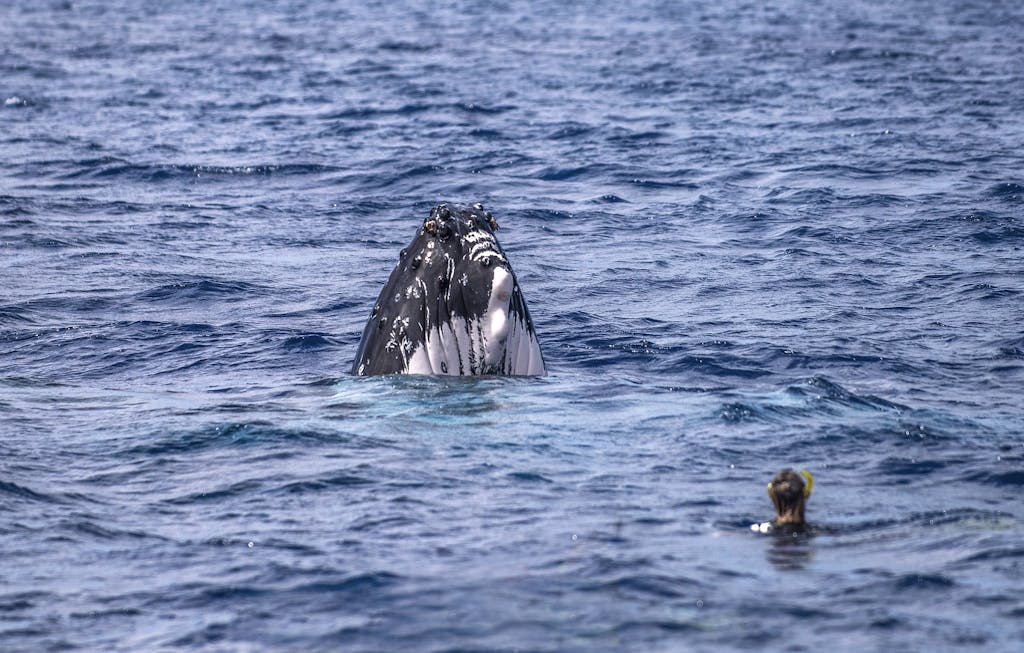
Whale watching with care
With an increasing number of people seeking whale-watching havens, it is more important than ever to consider with whom we undertake these experiences. Throughout the French Polynesia and Pacific, expert guides and operators run whale watching adventures, with some offering opportunities to snorkel with them in the water.
Regardless of what the experience entails, the animals must never be disturbed or put in danger by our presence.
Emma Johnson, a humpback whale expert and Silversea expedition team member, explains, “To see these creatures in their natural habitat is a privilege. We must always remember this is their home.”
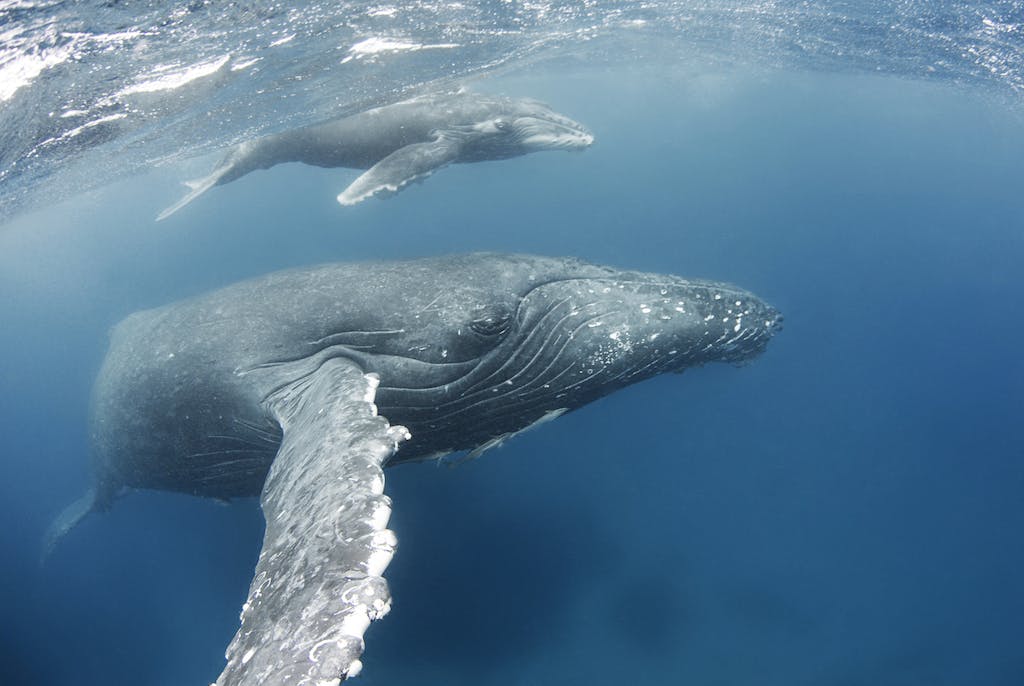
She says it is vital to give the whales time to get used to the presence of humans, whether we’re on the boat or in the water.
“If in the water, we swim slowly and as one group– a respectful, calm approach so that peaceful energy is transferred to the whale,” she explains. Legs should be kept underwater to avoid loud or vigorous splashing. It’s also essential to stop and read the whale’s behavior and to listen to the guide, who will ensure the whales are comfortable.
As predators such as orca, also known as killer whales, come from beneath the whales, free-diving is not allowed. “Finally, we only spend a set amount of time with the whales, so that we do not disturb them for too long,” Johnson says. This time is established before the experience begins and follows strict conservation-focused guidelines.
There is no doubt encountering relaxed humpback whales in their natural environment is something exceptional. To be able to leave them, in the same way, is what makes the most spectacular of experiences.
Learn about the ceremonial dancing on Yap Island.
